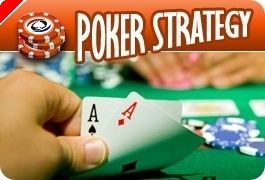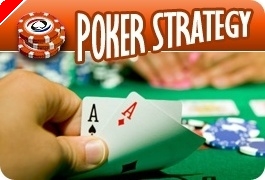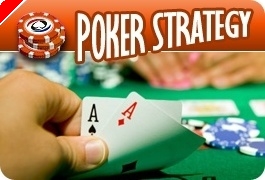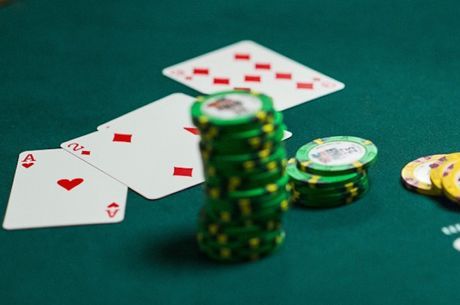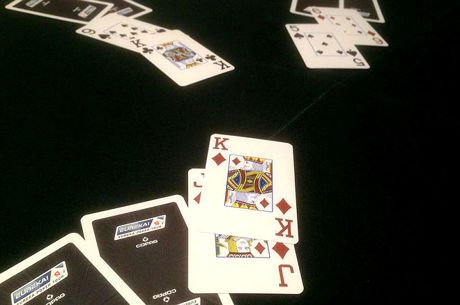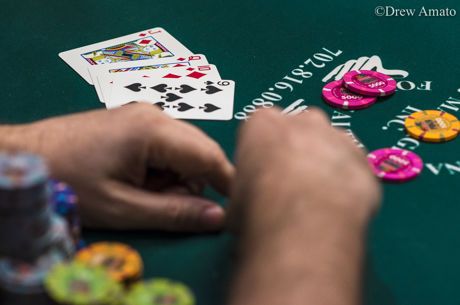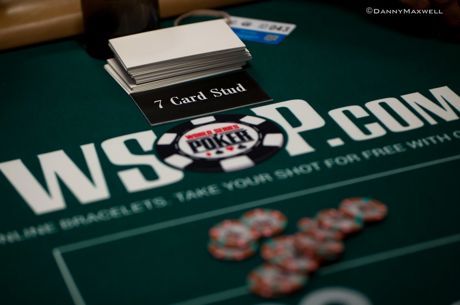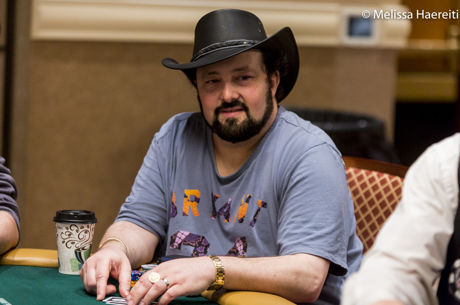Stud Poker Strategy: Spread Limit Strategy Considerations, Part 1
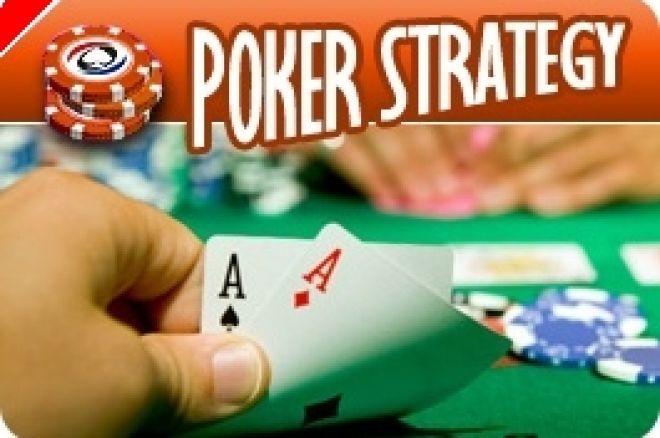
I write about fixed-limit stud – primarily $20/40 and $10/20. These are the games I tend to play and enjoy. However, as I've realized from recent emails from readers I've received both here and on my radio show, there is also a lot of interest in strategy questions that pertain to the low-limit stud games that are spread in many casinos these days like $1-3 and $1-5 spread limit.
These games are often spread with no ante. Strategy considerations are therefore quite different form the structured games I tend to play regularly. Let me address some of the differences generally and then specifically, so you spread-limit players may be armed with some insight your opponents may not possess.
Spread limit, unlike fixed limit, typically has a very, very small pot on third street. This is the product of the structure of the game and the general style of play of most participants.
The structure only requires one small mandatory bet – usually $1 and no ante. Thereafter, anyone may raise by any amount between the bottom and the top of the spread limit range. So in a spread limit $1-5 game players may increase the $1 forced bet to $2, $3, $4, $5, or $6. They may bet or raise by any amount in between $1 and $5 on any subsequent street as well.
Hence, ante stealing is a complete waste of time. It's not worth risking the spread maximum of $5, for example, to win a single dollar. Compare this with even a low-stakes fixed-limit game like $3/6 with a $.50 ante and $1 forced bet. With eight players, the raiser will win $5 if everyone folds to his raise. A no-ante, spread-limit raiser in even the smallest stakes spread limit game of $1-3 stands to win only $1 for his raise.
This tiny initial pot also exerts downward pressure on the aggression of the players – who often may not be particularly aggressive in any event. Invariably, players tend to call the $1 forced bet on third street. If they raise, they tend to only raise to $2 – which in turn tends to be called by anyone who called the initial $1 bet. This tends to be similarly so on fourth and even fifth street, with raises or even full spread-limit bets tending to be unusual until hands are completely made on sixth street or the river.
So what should you do about it?
I recommend a few things to take advantage of these low-limit games. I've used them myself to win a few bucks when this is the only game in town.
In general, mimic in most respect the betting habits of the others at the table – with a few important differences. Play more passively and loosely than you would normally play in a fixed-limit game. Specifically, draw more than you would do in a larger, more structured game. Be at least slightly less aggressive than you would normally be. And, in general, keep an eye on the pot when deciding to fold, raise, or call on sixth and seventh street.
If your game is one where players rarely raise the $1 forced bet, you can play many more hands than you would do in a more aggressive game. You can play any live three-flush, regardless of the card that heads it, any three-straight big or small, one-gapped straights as well, and hands that would normally be considered junk in a conventional game. So, for example, if you have two big cards, you can call the $1 regardless of your position at the table. Similarly, if you have an ace in the hole, even with nothing else, you can call the $1 bet.
The key is your ability to release these hands if they don't improve on fourth or fifth street.
Let's say, for example, that you start with an ace, ten, and five. A deuce brings it in, one player folds, and three call. There is one player after you. If your ace and ten are fully live, go ahead and call for the $1. You are hoping to hit an ace on fourth. If you do, then you will bet or raise the maximum. In that sense, you are treating the bet on third street much like an ante, with serious play beginning on fourth street. The pot will have been enriched to $7 or so. So your $5 bet on fourth is much like a raise on third street in a fixed-limit game with an ante.
I've also noticed that the betting tends to be very anemic even after third street. Players often check it around on fourth and even fifth street. If they bet it's often only $1 or $2. By relaxing your starting standards, you can often see two or even three cards for that $1 call.
In general, you can play even longshot draws in this game. But you have to be careful. You want to be drawing to the best hand – not the second-best hand, lest you trap yourself. Here's an example of that playing out.
You start with K-Q-3. The pot is not raised on third and five people call. On second street a player who had an exposed seven gets an ace. He bets $5. Two players in front of you call. Don't call this bet even if your king and queen are completely live and even if you now have three of the same suit. You're behind and probably very far behind. The ace probably hit an ace in the hole and now has a pair of aces. The fact that other players may passively call his bet doesn't mean you should.
I'm always willing to play a three-flush on either third or fourth street – provided that there are many players and the betting is light. But I'll toss a four-flush if someone has a paired door card on fourth or fifth.
You know the adage about not drawing to an inside straight. It often doesn't apply to this game. If it's sixth street, for example, and many players have been staying in, and the pot is very large because of it, it may well make sense for you to call a bet with an inside straight draw.
Let's say, for example, that you started with a live pair of sevens and a six kicker. No one raised on third and seven people, including you, called the bet. Though you might normally fold such a hand to a raise, in this game, with all of the action and the betting so little, it made sense for you to call as well.
On fourth street you hit a five, and your other straight cards and your sevens were live. You called the $2 bet by someone with a J-4. Four other players called as well. On fifth street you hit a nine, giving you 5-6-7-7-9. The eights and sevens\s were completely live. Someone who hit an ace bet $4. Three players called. You did too, not seeing any hands that looked like they might be flushes, higher straights, or full houses.
On sixth street you didn't improve. No one else did either, it appeared, though the ace now bet $5. Two players called. You had to decide what to do.
If you called $5 you'd be drawing to an inside straight. With all eights still live, there were four cards that would give you a straight and, presumably, the best hand. You had seen 27 cards. 25 remained unseen. Four of the 25 were eights, meaning you had a 21-to-4 chance against hitting a straight. Two of those cards were sevens – giving you trip sevens – a likely winner. Overall you were a little worse than 3:1 of hitting a winner, assuming your read of the other players was correct.
The pot was $44 (the seven $1 bets from the first round, the $10 from fourth street, $12 from fifth street, and the $15 on sixth street) – meaning you were getting almost 9:1 on your $5 call. Whenever you are getting a better return on your bet than the odds against you hitting your hand, you should call the bet. A call clearly made sense – even though you had an inside straight draw.
As you can see, it makes sense to deviate from the typical tight-aggressive style that you may have adopted to beat the conventional fixed-limit game. But that's okay. Poker is a game of making adjustments. In my next column I'll look at other adjustments you can make to suit the typical low-stakes spread-limit stud game.

